- New
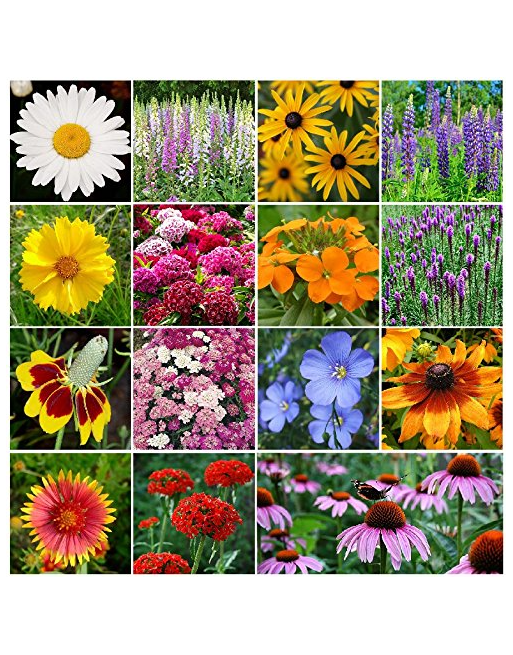





 Security policy
Security policy
(Paypal,Credit card secure payment)
 Delivery policy
Delivery policy
(Free shipping,Arrive within a week)
 Return policy
Return policy
(Free replacement within one month)
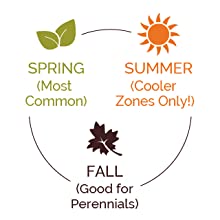
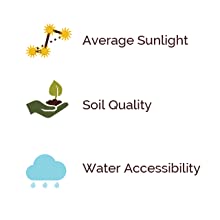
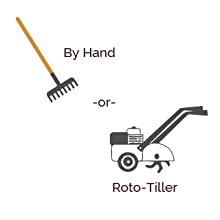
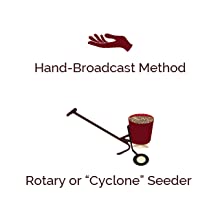
Plant the Wildflower Meadow of Your Dreams!
When-to-plant-wildflowers
When to Plant
Spring Planting: Best within a month or so after the final frost. The exact date varies based on region. Don't plant to early, if seeds are sown prior to a late-season frost they will not germinate.
Summer Planting: Advisable only for cooler areas where temperatures don't hover at 80° or more for long periods of time.
Fall Planting: Most people plant in the spring, and that’s fine. But think about it. In the wild, when wildflowers “go to seed” after the flowers fade, that’s when the seed is dropped. It simply falls to the ground and waits for the cycle through winter to spring. So the naturally-planted seed is planted in fall, not in spring. It’s best to wait until frost, then clear the ground of grasses and weeds, just like you would in spring. Use a shovel or rake for a small patch, or a rototiller for a bigger planting, and just spread the seed. It’ll be just fine through the winter, and be up and growing for you in very early spring.
Where-to-plant-wildflowers
Where to Plant
Average Sunlight: Most wildflowers prefer full sun. Though many wildflowers do tolerate some filtered shade – and a few actually thrive in it - the vast majority are definitely sun-lovers and will likely demonstrate the strongest bloom where exposure is greatest.
Soil Quality: Wildflowers will sprout in all but the most difficult conditions. Pampering your site with fertilizer or rich sod is not usually necessary. In fact, doing so can sometimes achieve the opposite result by inviting unwanted weeds and grasses. Only in the poorest of conditions, where the soil is literally sterile, is using an accelerant advisable.
Water Accessibility: A steady watering source is helpful, but not always necessary. In most regions natural rainfall will be sufficient to provide the water necessary. If you live in a arid region, are planting during drier months, or are experiencing prolonged drought, watering your site every other day for the first few weeks until root growth is established is advised.
How-to-prepare-soil
How to Prepare Soil & Decide Seed Coverage
Determine Coverage: We generally recommend one standard seeding rate for all wildflower mixtures. See our recommended coverage chart.
Prepare the Soil: This is an absolutely vital step in the installation of any successful wildflower seed project. Though it may sound tempting to randomly cast your seeds into thin air and hope they will sprout, it is simply a waste of time and money to do so on a site that has not been properly prepared for planting. Though wildflower seeds are tenacious by nature - and a few might even persevere under the most inhospitable of circumstances - they, like all seeds, will perform best when rid of noxious weeds and grasses. Prepare your soil by hand or with a roto-tiller for larger jobs.
How-to-plant-seeds
How to Sow Your Seed
So now you’ve got some sweat on your brow and you’re ready to plant! We recommend mixing your seed with regular “sand box” sand at a ratio of about 5 parts (sand) to 1 part (seed). This allows for a more even distribution and also provides a convenient way to mark which portions of the site have been seeded and which have not. This is not a required method for a successful planting, but most will find it a simple, affordable, and practical step.
1) The Hand-Broadcast Method (for smaller jobs): Simply scattering the seed evenly over the site by hand.
2) The Rotary or “Cyclone” Seeder (for larger jobs). This method accomplishes the same results through the use a hand-cranked spreader that can be purchased relatively cheaply at any garden center.